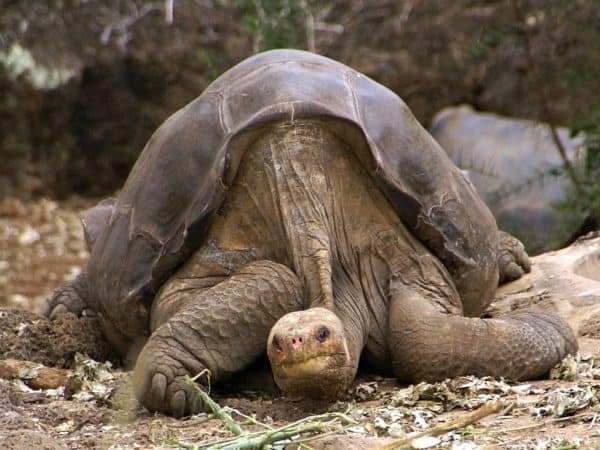
 Lonesome George has made his final trip, this time heading home to the Galapagos Islands for good.
Lonesome George has made his final trip, this time heading home to the Galapagos Islands for good.
The giant tortoise, the last known member of his subspecies, died in 2012 and is having his preserved body flown back to Santa Cruz Island in the Galapagos from New York City where it had been on display at the Museum of Natural History.
Estimated to be about 100 years old when he died, Lonesome George was first discovered on Pinta Island in the Galapagos in 1972, a surprise to conservationists at the time as his line of tortoises was thought to have already been extinct. Efforts over ensuing years to pair up the tortoise with females from neighbouring islands proved fruitless, however, gaining George his nickname and securing the fate of the Pinta Island giant tortoise subspecies.
Lonesome George’s story —and that of the Galapagos giant tortoises as a whole— is one of over-hunting by humans and destruction of habitat on the ecologically fragile Galapagos archipelago, now a UNESCO World Heritage Site. 19th and 20th century sailors and whalers brought about the decimation of tortoise species which once numbered in the hundreds of thousands and had been whittled down to a few thousand, with three species known to have become extinct.
For much of the 20th century, George’s own line had been assumed extinct until a biologist located the tortoise in 1971, which resulted in the failed breeding attempts but also bought about a growing awareness around the world of the Galapagos tortoises and of conservation efforts on the islands. Over the past few decades, breeding and release programs on the Galapagos have proven moderately successful in raising the numbers of a few of the tortoise subspecies.
“The plight of Lonesome George provided a catalyst for an extraordinary effort by the government of Ecuador to restore not only tortoise populations throughout the archipelago but also improve the status of other endangered and threatened species,” said the Galapagos National Park in a statement at the time of George’s death. “Lonesome George’s legacy will be an increased effort in both research and management to restore his island of Pinta and all of the other giant tortoise populations of Galapagos.”
Over the years, Lonesome George increasingly became the face of species conservation and wildlife preservation, taking on the title of world’s rarest creature. His body will be available for public viewing on Santa Cruz starting on February 23rd.
Writing for The Guardian, Henry Nicholls, chronicler of global conservation efforts and author of a book entitled Lonesome George, says that he is “delighted” with the decision by Galapagos National Park to bring George back home again. “This tortoise embodies extinction, quite literally, and people all round the world have been moved by his life, his death and now his afterlife.”
Once found in many regions around the globe, Galapagos tortoises are now one of the few remaining groups of giant tortoises, with an estimated 20,000 to 25,000 wild tortoises now on the islands. In 2007, UNESCO declared the environment on the Galapagos islands as endangered due to increases in tourism and the introduction of invasive species.
Leave a Reply
You must be logged in to post a comment.



 Share
Share Tweet
Tweet Share
Share




Comment